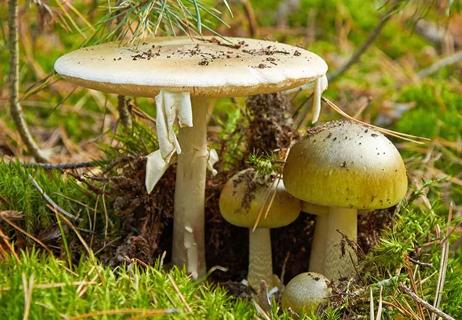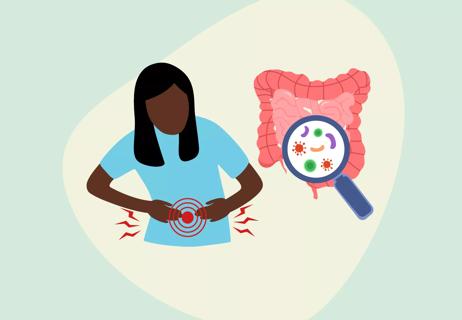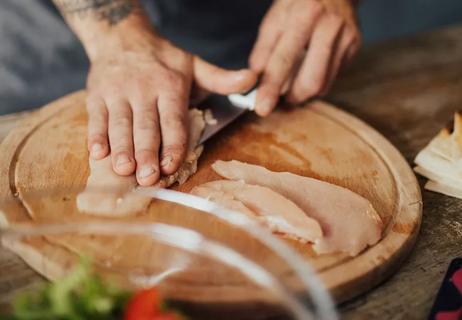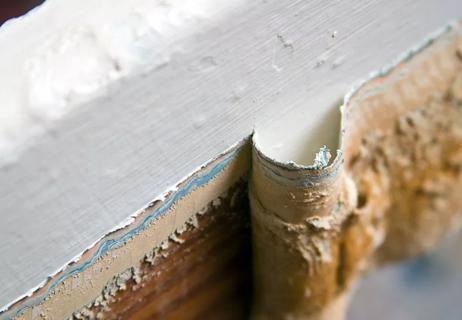A dermatologist’s advice for finding some relief for that itchy rash

You’ve spent a glorious day in your garden. Or you went on a beautiful hike. Or you picnicked with friends, or took your dog for a walk, or… well, whatever you did, you’re now itchy, splotchy and covered in little red bumps.
Advertisement
Cleveland Clinic is a non-profit academic medical center. Advertising on our site helps support our mission. We do not endorse non-Cleveland Clinic products or services. Policy
Poison ivy strikes again — or maybe it’s poison oak or poison sumac, as all three plants contain the same oily, allergy-inducing sap called urushiol. An estimated 50% to 75% of the population is allergic to urushiol, which is found in every part of the plant, including the fruit, leaves, stem, and root.
“When the plant is broken, the resin leaks out,” explains dermatologist Pamela Ng, MD. “You’ll get this rash everywhere the resin touches — and then, if you get it on your hands and touch your face or other parts of your body, you’ll spread it.”
Dr. Ng talks about how to treat your poison ivy rash at home and what to expect as it heals.
Poison ivy rash (along with the rash from poison oak and poison sumac) brings on bumps, blotches and, typically, a linear streak of swelling and blisters. “It can even be weeping and crusting,” Dr. Ng says, “and it’s intensely itchy.”
But the rash may not appear right away.
If you’ve been exposed to urushiol in the past and are re-exposed again, your rash will appear in four to 96 hours (though 24 to 48 hours is most common). But if it’s your first time being exposed to the plant, it can take up to two weeks for a rash to appear.
“Your immune system has to develop an allergic reaction first,” Dr. Ng says, “so if it’s the first time your body has ever seen it, it’s going to take a while for the rash to appear.”
Advertisement
Poison ivy rash is easily spread — on your body and even from pets to humans. If you touch a poison ivy plant with your hands, for example, and then touch your face or body, you’ll see a rash at both the original point of contact and the places you’ve touched.
And you don’t necessarily have to make contact with the plant itself in order to make contact with the resin. “People can break out after contact with the resin on their gardening tools, their clothing, or their dogs,” Dr. Ng says.
Uh-oh. While working in the backyard, you pulled out some unwanted weeds before realizing that one of them was poison ivy. Now what?
If you know you’ve come into contact with poison ivy, poison oak or poison sumac, take a shower to wash off the resin. You won’t be able to get it all — after 10 minutes of washing your skin, only about 50% of the urushiol resin comes off — but you can lessen its impact.
You can also try Zanfel®, a special wash that you apply after exposure to limit urushiol’s effect on your skin. “It binds to the resin and neutralizes it so that it’s no longer an allergen for you,” Dr. Ng explains.
Unfortunately, the best natural remedy for poison ivy is time.
“Poison ivy just has to run its own course,” Dr. Ng says. But if your rash has already developed, there are steps you can take to bring some relief in the meantime.
Advertisement
Finally, don’t be alarmed if your rash gets worse before it gets better. It typically hits its peak at two weeks before starting to heal. “Try not to freak out if the rash isn’t gone yet,” Dr. Ng says. “This is its natural course.”
Most of the time, poison ivy heals on its own. But make an appointment with your doctor if you have:
Your doctor may put you on topical or oral steroid.
Once you’ve had a rash from poison ivy, poison oak, or poison sumac, your symptoms will appear more quickly the next time you’re exposed.
To lower your risk, do the following when you’re outdoors, especially gardening or doing yard work:
Advertisement
Learn more about our editorial process.
Advertisement

Rinsing raw chicken raises the risk of spreading harmful bacteria and causing foodborne illness

Keep cooked rice and pasta in your fridge — not on your counter — to help prevent this sneaky food poisoning

Mushroom poisoning is real — and it can cause liver failure

Food poisoning typically passes within 12 to 48 hours, with symptoms including diarrhea, nausea, stomach pain and vomiting

Cleanliness and food preparation precautions are the best defense against infection

Learn about the symptoms and find out how to protect yourself and your family

Children should be screened for lead poisoning starting at ages 1 and 2

How to protect yourself from food poisoning

Start having sex about 72 hours before ovulation, then at least every other day during your fertile window

Attachment theory suggests that your earliest relationships shape connections throughout your life

It isn’t a recognized mental health disorder, but research shows that problematic social media use can negatively affect your mental health, self-esteem and sleep